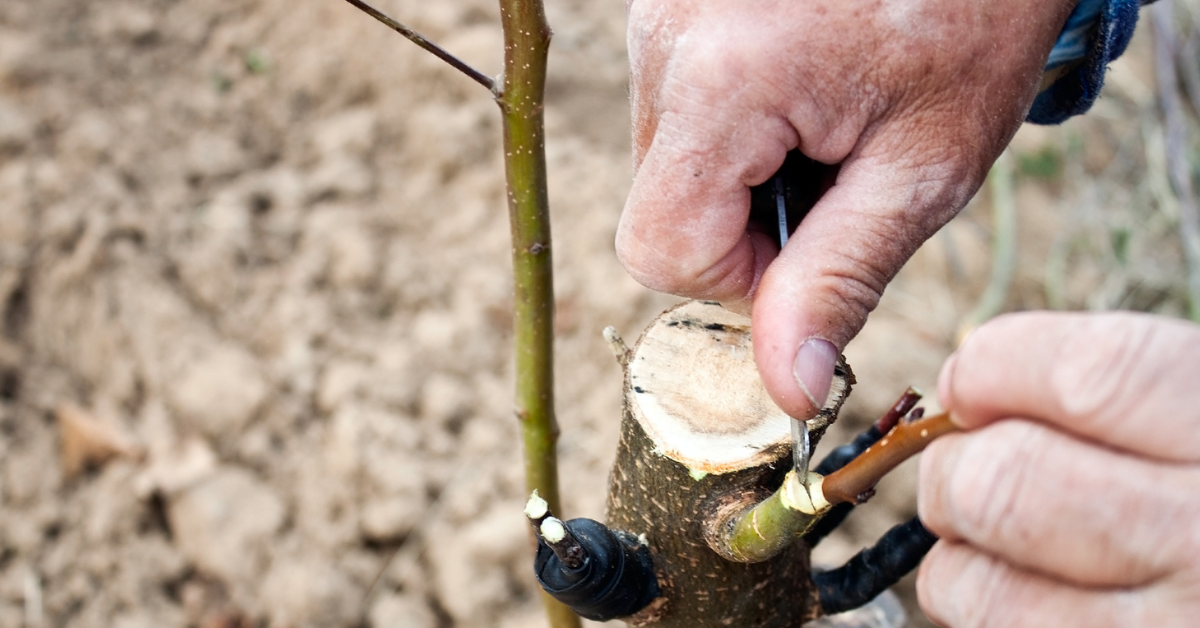
“Advantages of using grafted vegetables include better resistance to pathogens, drought and other environmental stresses, more vigorous growth, and higher yield. These advantages also allow for fewer inputs such as pesticide applications and an extended harvest season.” (Bizen, Hu & Beartrack, Matt, Intro to Vegetable Grafting, OK STATE.EDU, 2022).
Do not consider yourself to be superior to those other branches. If you do, consider this: You do not support the root, but the root supports you. – Romans 11:18 NIV
Once there was a tiny shoot that grew in a grove. It grew bravely, although slowly, into a sprout, a tiny twig poking out of the soil. As it fought for its patch of sunlight, it grew gradually, bit by tiny bit. But it, like its fellow twigs, seemed to be doing rather ok overall as it grew a tiny bit taller season by season.
In the grove where the little twigs grew, there stood a tree, ancient and very strong. Some of the twigs had been pulled from the ground and had been grafted onto the mighty tree by the Master Gardener. Many of the twigs growing on the ground thought this rather silly. After all, the twigs had been able to grow by themselves for a very long time. Why would they need the tree to support them? So the twigs on the ground continued to struggle and grow on their own, millimeter by millimeter, day by difficult day.
One day the tiny shoot began to realize the pain that growing brought. But it thought it had no choice but to keep on trying and trying and trying to grow, without help, all alone. Maybe it asked for help. Maybe the Master Gardener saw the little plant struggling. But one day, the Master Gardener took the little plant in his gentle hands and grafted it into the ancient tree.
The little twig grew to love the strength of the mighty tree. The twig grew to love the protection and care it received. And the twig grew mightily. It produced a bounty of fruit. It was happy when it saw its neighbors bear fruit, too. But some of the twigs grew warped, prideful in their status as one of the tree’s branches, producing sparse and misshapen fruit. This made the little twig sad. Yet the Master Gardener gently worked on correcting and pruning these little branches until they also produced a bounty of fruit. The tree continued to grow and produce fruit and was more lovely and more abundant than any other in the land.
We are, all of us, unspectacular little twigs, growing tentatively, growing rapidly, and sometimes we grow horribly. Our branches become tangled and our fruit stunted. We perhaps have taken pride in our strength without remembering that our strength comes not from ourselves but from the mighty tree which makes our growth vigorous and sure. We need the hand of the Master Gardener to help us grow fully and well. Our strength and our beauty comes from the mighty tree. It comes from the love of God, from the salvation of Christ, and from the helping of the Holy Spirit. We are nothing without it. We do not grow without it.
We can grow on our own but we become gnarled as we attempt to grow, millimeter by millimeter. We grow slowly, grudgingly, day by day without knowing our own purpose, without knowing our own hope, without being connected to the mighty tree and subsequently connected one to another. A life unconnected to the very force of God is a life of shallow growth and unceasing hollowness. We must rejoice that we have been grafted. We must rejoice that we have been found. We must be grateful to the Master Gardener who found us as the stunted little twigs that we were and gave us new life. We are not our own. We are the mere twigs, mercifully grafted onto the mercy, strength and love of God.
Written by Janet Keefe


